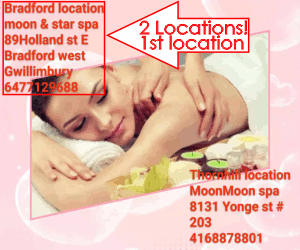
Our bodies require a lot of upkeep. Muscles get tight, joints get stiff, organs become overworked, your Qi becomes stagnant. That’s where cupping comes in.
Cupping is the therapy that leaves weird, circular hickeys on your back, as anyone who watches the Olympics knows. It’s in the same realm as massage and acupuncture, but it remains a relatively mysterious treatment option for many people.
Why even try cupping? Why not just get a regular deep tissue massage or some acupuncture?
Cupping is a practice common in Traditional Chinese Medicine. Essentially, cups are placed over a client’s body, and heat or a light vaccuum suction pump are used to increase the pressure inside the cup and on the skin. The cups are either kept still or are lightly glided over oiled skin. And unlike massage, which further compresses areas of tightness to initiate a release, cupping actually pulls them up and apart, actively releasing the compression.
While limited studies have been conducted to fully understand the benefits of cupping, we do know that it expands the capillaries, allowing more blood to flow into the surrounding tissue. That’s why some people experience those circular, painless bruises after a treatment. But what does cupping actually help with?
Enhances Qi Flow
Just as with acupuncture, cupping promotes the flow of your Qi, or life force energy. If you subscribe to the principles of Traditional Chinese Medicine, cupping unblocks stagnant energy by following meridian lines like in acupuncture. Many practitioners claim that cupping can help pull toxins and stagnant fluids out from your tissues, thereby encouraging the body to replace them with a fresh circulation of fluids like blood and lymph.
Pain reduction
First and foremost, studies have found that cupping can significantly improve pain in those with lower back issues. By improving circulation in painful areas, it works powerfully to reduce inflammation. As if that wasn’t enough, if you have had a hard day of exercise, cupping can ward off soreness and speed up recovery by reducing the buildup of lactic acid in the muscles.
Increases relaxation
By sedating the central nervous system, cupping is an incredibly relaxing practice. Much like acupuncture, a cupping session can profoundly reduce stress, anxiety and depression. Its effect on tense muscles is also similar to that release felt during and after a deep tissue massage.
Immune support
Blood flow isn’t the only thing cupping improves. It also improves lymph circulation. Lymph is a huge part of your immune system as it helps to rid your body of toxins and waste. It also is not actively pumped through the body, like blood, but circulates based on movement and gravity. If your lymph remains stagnant, those toxins just linger in your body rather than heading off for proper disposal. By using cupping on stiff or stagnant areas of your body, lymph circulation is vastly improved.
Improves digestion
While we are uncertain why cupping can support those suffering from digestive disorders (like IBS), some believe that it is due to the decrease in stress levels often seen after a cupping session. Stress has a powerful hold on the digestive system. Anything that reduces stress often improves digestive disorders. Of course, improved blood flow to the digestive area may also be highly beneficial.
I have personally experienced cupping once, and it was pretty incredible. I had some tightness around my tailbone that was bothering me, so my therapist asked if I wanted to try cupping and brought out this intimidating-looking suction cup machine. Of course, she started me out on the lowest setting, so I barely felt a thing. But as she moved the cups around and strengthened the suction, something incredible happened. The tight bands of muscle and fascia that surrounded my upper glutes and tailbone began to quiver and release! It was as if the muscles had been so mushed together and compressed that they were dancing for joy as the fibers were separated and released. It felt really amazing, really helped my lower back pain and was incredibly relaxing.
Cupping isn’t just for elite athletes. It can be a useful tool, along with other Western and Eastern techniques like acupuncture and massage. Talk to your bodywork professional and discuss whether cupping is a beneficial treatment you’d like to try.
Related:
Do You Have a Dead Butt?
8 Sure Signs It’s Time for a Tech Detox
7 Surprising Foods You Should Always Refrigerate
Let's block ads! (Why?)
























































































